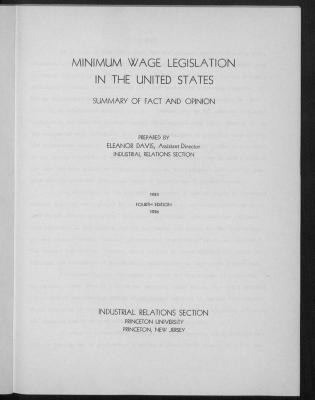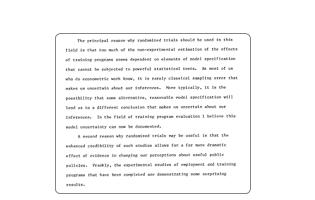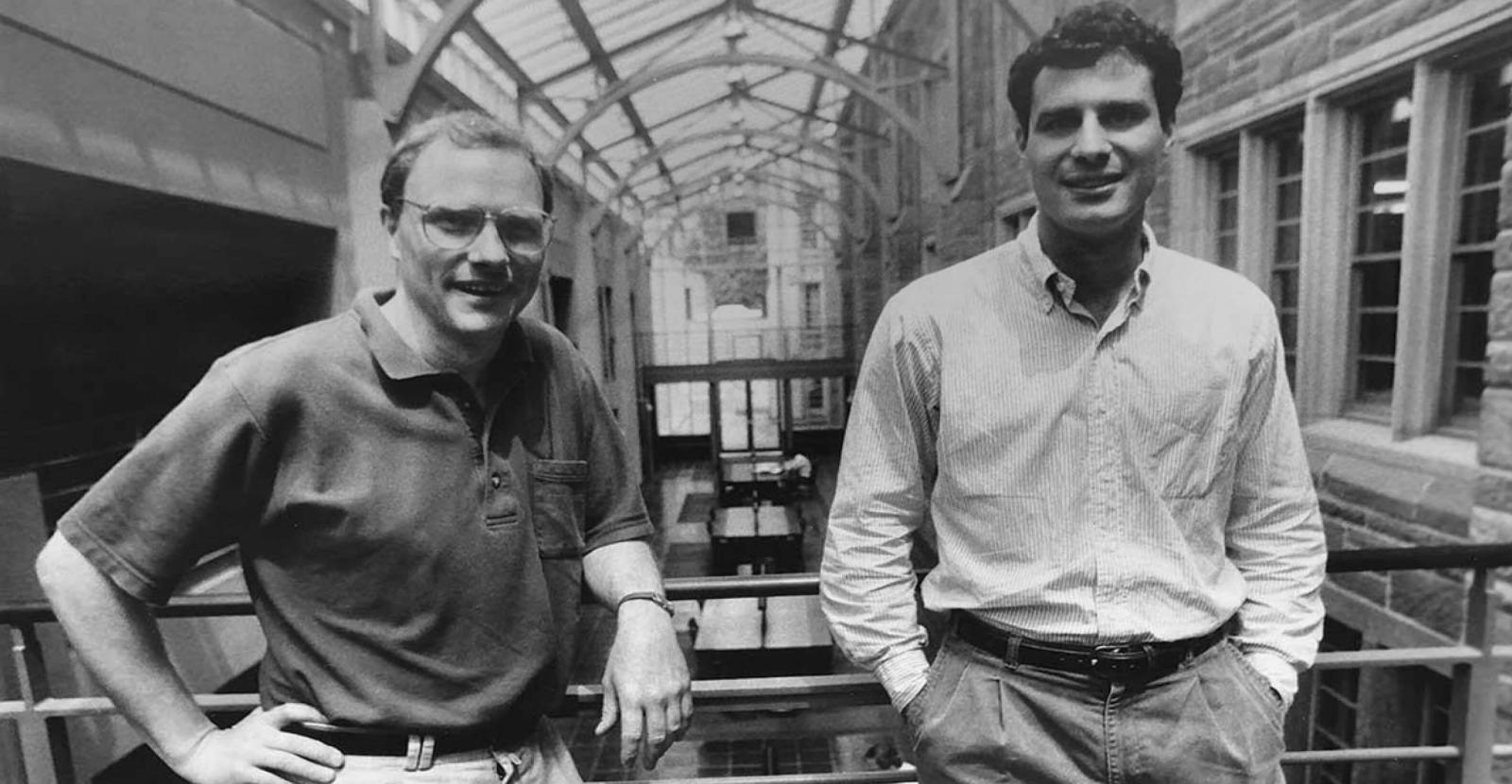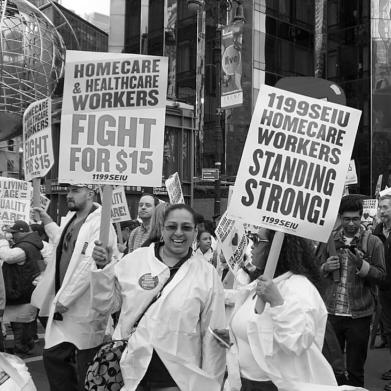The federal minimum wage is established
IR Section research on the minimum wage pre-dates the establishment of the federal minimum wage, beginning with the publication of “Minimum Wage Legislation in the United States: Summary of Fact and Opinion” in 1933.
The Fair Labor Standards Act of 1938–one of many controversial New Deal programs that created new protections for workers—established a federal minimum wage and the right to overtime pay for hours worked beyond 40 hours per week.

FLSA amendments and adjustments to the minimum wage
Since its passing, the Fair Labor Standards Act (FLSA) has been amended many times to adjust the level of the minimum wage or to redefine–and at times limit–which categories of workers are covered by the Act’s provisions.
Amendments to the FLSA increased the minimum wage in 1949, 1955, 1961, 1966, 1974, and 1977. In a 1961 amendment, retail and service industries were granted an exception that allowed them to pay certain employees below the minimum wage. In 1966, coverage under the Act was extended to employees of public schools, nursing homes, laundries, the construction industry, and some farms. In 1977 an amendment ensured many employees of federal, state, and local governments were subject to the federal minimum wage.
The Reagan years shrink the real value of the minimum wage
In the 1980s, the Reagan administration created a political environment that stood in sharp contrast to the pro-worker sentiment of the New Deal. As a popular book and documentary series by the economist Milton Friedman and his wife Rose Friedman set off a vigorous debate about whether and how minimum wages might hurt the U.S. economy and U.S. workers, the minimum wage remained flat.
Throughout Reagan’s two terms as president, the real value of the minimum wage declined, reaching its lowest point since the 1950s by the end of the decade.
The “credibility revolution” finds its roots at Princeton
In 1986, IR Section Director Orley Ashenfelter published a paper that helped launched the “credibility revolution” in economics–a term that refers to the field’s recognition that gold-standard experimental methods (like those often used in the hard sciences) can improve the credibility and reliability of new findings in economics research.

In “The Case for Evaluating Training Programs with Randomized Trials,” Ashenfelter uses classical experimental methods to compare employment, earnings, and other outcomes of training programs across groups. Ultimately, he argued that the use of experimental methods in some contexts could not only produce more credible results, but also provide a cost-effective way to study the effects of different policies.
In the decades to come, the study’s methodology would influence the use of experiments in hundreds if not thousands of papers–including groundbreaking work by IR Section researchers on the minimum wage–starting with two papers by Nobel Laureates Joshua Angrist (IR Section Working Paper #251) and David Card (IR Section Working Paper #253). Both papers were produced at IRS in 1989 while Angrist was a Ph.D. student and Card was serving as a professor of economics.
Surprising results from an experiment in New Jersey

In 1993, after a decade of heightened skepticism about minimum wage policies, IR Section faculty Alan Krueger and David Card published a study that not only challenged prevailing wisdom about the effects of the minimum wage, but also set a new standard for policy evaluation.
In “Minimum Wages and Employment: A Case Study of the Fast Food Industry in New Jersey and Pennsylvania” (IR Section Working Paper #315), Card and Angrist surveyed more than 400 fast food restaurants in New Jersey and Pennsylvania before and after a rise in New Jersey’s minimum wage. They found that the wage increase did not force restaurants to cut jobs. In fact, restaurants in New Jersey subject to the wage increase hired 2.5 more employees per store than restaurants in Pennsylvania.
The relationship between minimum wages and inequality
As Krueger and Card conducted their path-breaking work on the minimum wage, another prominent labor economist and future IR Section director was working on his dissertation at Princeton. In 1999, the same year he graduated from Princeton, David Lee published an examination of whether stagnant minimum wages during the 1980s contributed to the growth in wage inequality observed during the Reagan administrations.
Lee’s research, published by the Quarterly Journal of Economics, found that much of the growth of “within group” inequality in wages during the 1980s (i.e. where worker gender, race, or educational attainment are the same or similar) between workers at the 10th and 50th percentile in the wage distribution is due to a decline in the real value of the federal minimum wage. This was especially true for women.

Work on the minimum wage has continued until this day. In 2021, nearly 100 years after the Section’s founding, a Quarterly Journal of Economics paper by Ellora Derenoncourt–who joined Princeton that same year–showed that the expansion of the minimum wage in the late 1960s and early 1970s played a critical role in the decline of the racial earnings gap.



